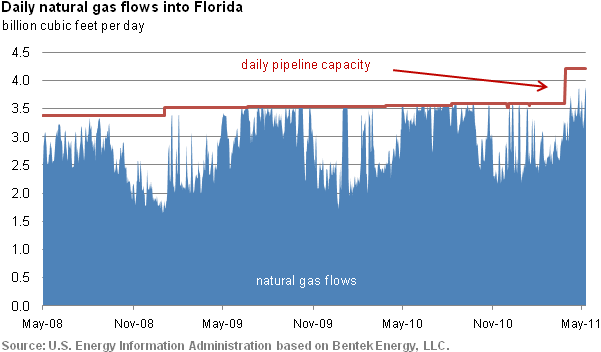
New natural gas pipeline capacity adds service into Florida

The lack of natural gas storage in Florida, as well as limited areas of gas production, makes the State dependent on two main supply pipelines for most of its natural gas supply: Florida Gas Transmission (FGT) and the Gulfstream Natural Gas System pipeline (Gulfstream).
On April 1, 2011, FGT placed its Phase VIII Expansion project in service. This project included 483.2 miles of new underground pipeline, as well as an upgrading of eight existing compressor stations and the building of a new compressor station in Highlands County, FL, increasing FGT's capacity by 0.82 billion cubic feet per day and the peak pipeline capacity to the State by over 20%.
Additional capacity into the Florida market is important as the pipeline utilization is often near or at capacity. Last summer, the utilization of pipelines into Florida averaged 96%, largely due to gas needed for power generation in support of air conditioning load. In the winter, utilization can rise to summertime levels during cold spells, as power generation is needed to support added heating load. Comparatively small increases in natural gas flows into Florida can increase related prices significantly when flows on FGT and Gulfstream reach their capacity limits.
Tags: Florida, natural gas, pipelines, states